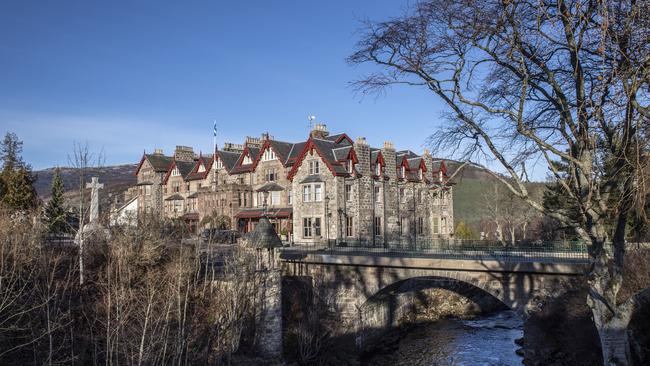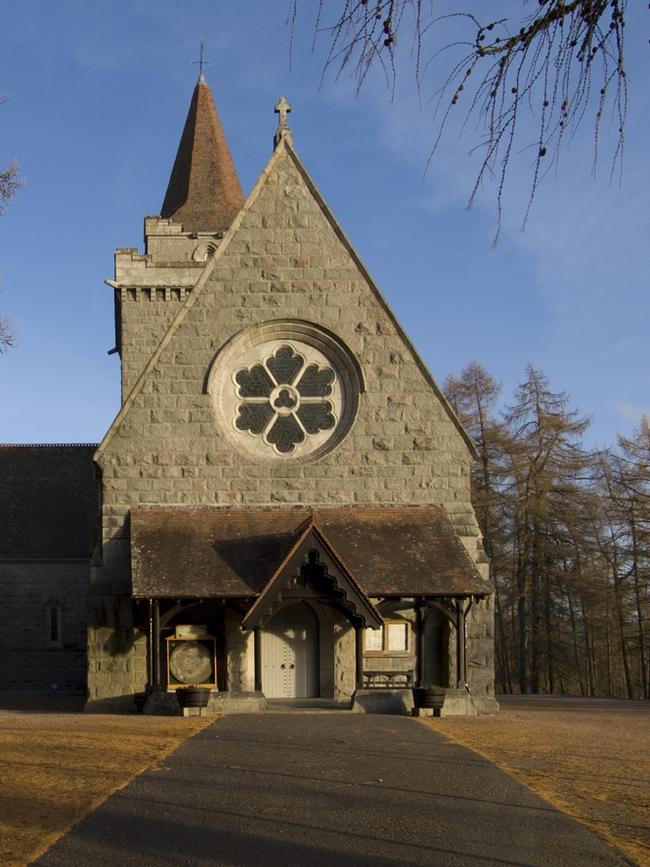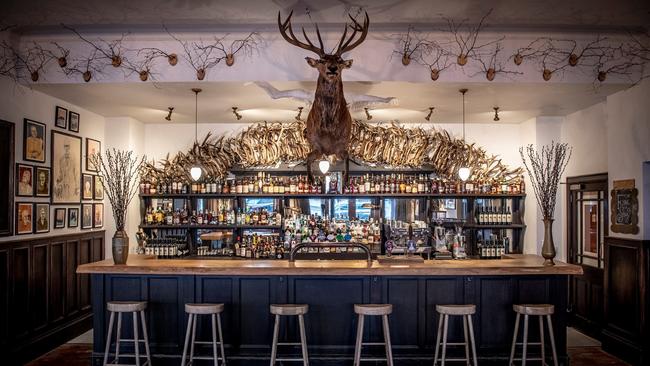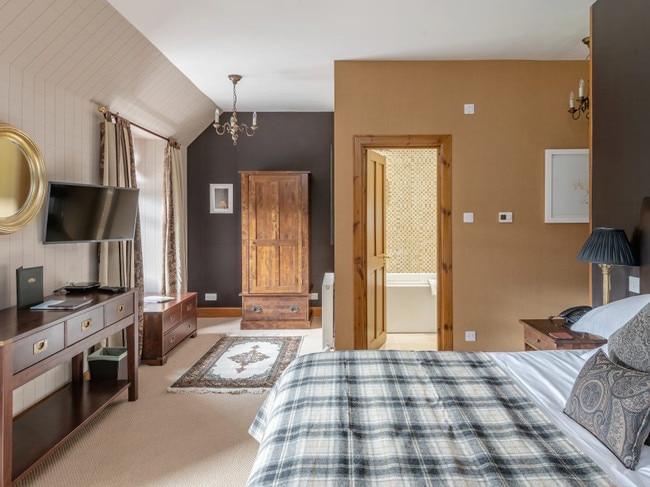A driving tour of the Scottish Highlands fit for royalty
Rural Scotland, a longtime royal playground, is drawing uncrowned sybarites in search of luxurious hotels, wild beauty and a wee bit of whisky.

As the grandson of a Scotswoman, I’ve always instinctively loved Scotland. All my previous trips to the country – first during my penniless junior year abroad, then later as a travel writer – bolstered my enthusiasm. I invariably met locals up for a wee chat and often a wee drop of whisky, too, and came away awed by its landscapes and fascinated by its history. But aside from a few notable exceptions, such as Gleneagles, famous for its three golf courses, I mostly slept in austere lodgings and dined on wholesome but plain food. For all its homespun charms and exultant natural beauty, Scotland never registered as a luxury destination. Then again, in 1852, Queen Victoria and Prince Albert, also smitten by the scenery, bought Balmoral Castle in what’s now Cairngorms National Park, clearly appreciating the area’s potential as a cosseting retreat.

Now, thanks largely to two other power couples, rural Scotland is well on its way to realising that potential and becoming an upscale tourist destination, even for those lacking royal pedigree. One of those couples, Swiss gallery owners Iwan and Manuela Wirth (co-founders of Hauser and Wirth galleries), took over the Fife Arms, a 19th-century inn in the pretty village of Braemar, a few miles from Balmoral, and bought a home nearby. In 2019, after a top-to-bottom renovation, the inn re-emerged as a posh 46-guestroom hotel.
On my most recent visit to Scotland, in September, I join friends who live in Edinburgh for a week-long driving tour in the country, stopping first at the Fife Arms. If the tweed jackets and plaid kilts of the male staff don’t surprise me, the Lucian Freud portrait of Red Haired Man in the main drawing room stops me in my tracks. Throughout the inn, the baroque decor is spiked with pieces by Picasso, Louise Bourgeois and other notables, all worthy of a small museum. The design, by London-based Russell Sage Studio, mixes and matches patterns, textures and objects: floral wallpaper, plaid wallpaper, potted palms, framed etchings, taxidermy and a chandelier of “ethically sourced” antlers. It takes me a while to process, but ultimately I warm to the cosy chaos.

Heading out to stretch my legs while my friends go off to visit a relative, I stroll the streets of Braemar, where the Highland Games are held annually. I’ve just come out of the Hazelnut Patisserie, a charming new shop, when I notice my phone is out of battery. First I panic, but then I notice a bench overlooking the rushing stream called the Clunie Water. So I sit down and snack on an organic beef pie from Wark Farm and the blackberry tartlette I’ve just bought and give in to the long-lost pleasure of idleness.
After a nap in my tartan-bunted room, I join my friends for a guided whisky tasting in the hotel’s Bertie’s Bar, before heading to the dining room. There, we tuck into a beef Wellington beneath a mural by Argentine artist Guillermo Kuitca and a Pieter Bruegel painting hanging on another wall.
The next day we set out for a half-day excursion to Balmoral and environs with Simon Blackett, a former soldier who now runs Yellow Welly Tours. It’s unlikely you could lose Blackett, who stands 2m tall and always wears a pair of bright yellow rubber boots, and even less likely you’d want to. He’s good company and knows the region intimately. After walking the grounds of Balmoral, Blackett leads us to Crathie Kirk, the snug granite church just outside the gates. Inside, a white marble bust of Queen Victoria surveys the public pew. Another bust of the late Queen Mother cocks her head in a private apse the royal family occupies when they come to services.

For lunch, we return to the Fife Arms for smoked salmon and venison burgers at the Flying Stag pub. Then my friends and I get back in the car for a majestically moody two-hour drive to Killiehuntly Farmhouse and Cottages, on the other side of Cairngorms National Park. The farmhouse, just outside the town of Kingussie, is one of Scottish hotels run by Danish retail mogul Anders Povlsen and his wife, Anne. The Povlsens are some of the largest private landowners in Britain, owning more than 80,000ha. These holdings include the 17,000ha Glenfeshie estate, also in Cairngorms National Park, along with several other Scottish estates, all of which were acquired as part of the Povlsens’ 200-year plan to “rewild” Scotland, or restore its forests and revive the wildlife that once inhabited them.

To keep the estates economically viable, the couple has been creating hotels like the five-room Killiehuntly, which occupies a solid 1850 granite manor house that’s been decorated in a style the British press has dubbed “Scandi-Scot”. That appears to be shorthand for pine-plank floors, dove-gray or white walls and sheepskins draped over wood-framed chairs. The views from the rooms upstairs – a patchwork of fields, moors and forests – would keep me happily parked at the farmhouse for days but we stop only for tea and a look around before carrying on to our next stop, to stay with friends near Ardgay, about 130km northwest.
At a dinner party near Ardgay that night, the conversation keeps returning to the same three subjects: Scotland’s post-Brexit future, the much-crowed about seaside golf course at Ardfin, a new and dearly priced resort on the Hebrides island of Jura (rooms from $1800 a night) and the new style of Highland hospitality that’s making Scotland so popular with a younger generation of travellers. “I think climate change and Covid are making more people hungry for the cool, unspoiled beauty of Scotland, and its spaciousness,” says our hostess.
I get a healthy dose of that spaciousness the following day when we drive over to Alladale, a 9000ha estate where conservationist Paul Lister has created what he calls a wilderness reserve. On the property are four exclusive-use lodges, from two to five bedrooms. They’re all filled with traditional overstuffed furniture and tartan touches. Each has its own kitchen but guests can also opt for cooked-to-order meals by a talented chef who uses local produce. Magnificent isolation paired with coddling; that sounds like the royal treatment to me.

In the know
Accommodation at The Fife Arms starts in Croft single rooms from £250 ($464) a night.
Yellow Welly Tours offers bespoke half and full-day itineraries around Deeside via Land Rover and Morgan sports car (one passenger only).
Rooms at Killiehuntly Farmhouse and Cottages from £435 a night, twin-share, including breakfast and dinner.
Alladale has four exclusive-use cottages; the smallest accommodates two to four, the largest, up to 18; self-catering and catered rates available.
THE WALL STREET JOURNAL

To join the conversation, please log in. Don't have an account? Register
Join the conversation, you are commenting as Logout